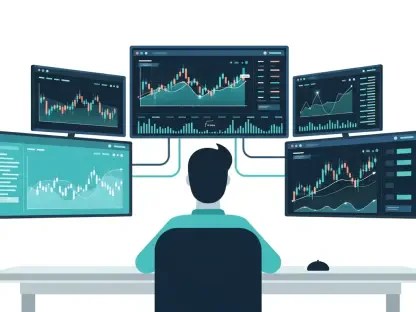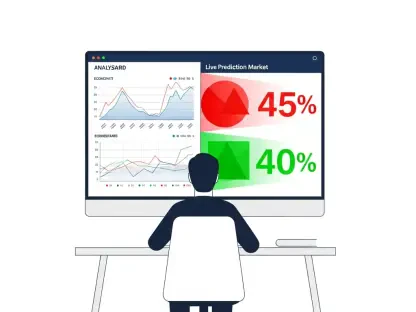The rise of real-time payment systems is redefining the landscape of global finance, promising substantial economic growth. Traditional banking methods, characterized by cumbersome delays, are being supplanted by sleek, instantaneous transactions that offer a seamless experience to users. Financial experts and industry leaders have noted the profound impact these systems have on economic activities, with forecasts indicating an increase in global GDP.
Current State of the Real-Time Payment Industry
Real-time payments represent a pivotal change in how financial transactions occur, affecting both private individuals and large corporations. The industry has grown robustly, driven by technological innovations such as blockchain and AI, enhancing transaction speed and security. Major players include banks, fintech firms, and emerging market leaders, each contributing to a dynamic landscape. Amidst this rapid development, regulatory frameworks have evolved, aiming to balance innovation with consumer protection. These regulations play a critical role in shaping the industry, impacting how institutions implement real-time payment technologies.
Key Trends and Growth Metrics
Emerging Trends in Real-Time Payments
Innovation within the real-time payment sector has ushered in several emerging trends that redefine financial norms. Enhanced digital platforms are catering to evolving consumer behaviors where demands for efficiency and flexibility are paramount. This shift is further supported by a burgeoning interest in personalized payment solutions, offering features like automatic bill-splitting and just-in-time payroll systems, providing users with unprecedented control over their finances.
Market Growth and Projections
Market data reveals a steady increase in transaction volumes, reflecting healthy growth metrics within the industry. As consumers and businesses increasingly opt for real-time methods, projections estimate a significant rise in processed transactions within the coming years. Economists and industry analysts forecast continuous growth, attributing this trajectory to technological adoption and expanding market coverage. This optimistic outlook positions real-time payments as a cornerstone for future economic activity.
Challenges and Complexities
Despite promising growth, the real-time payment industry encounters several challenges that demand resolution. Technologically, institutions face the hurdle of integrating new systems with existing infrastructure, requiring strategic investments in innovation. Regulatory requirements introduce additional complexities; navigating these conditions requires agility and compliance. Market-driven factors, such as consumer trust and the drive for adoption, also represent considerable obstacles. Solutions focused on bolstering security, enhancing interoperability, and increasing awareness are imperative to overcome these challenges.
Regulatory Landscape and Compliance
The regulatory landscape governing the real-time payment industry is both intricate and essential. Statutory regulations and standards shape an environment in which compliance is crucial for success. These frameworks ensure the stability and security of financial transactions, addressing concerns such as fraud prevention and data protection. Adhering to compliance measures becomes critical for industry players, promoting trust and facilitating smoother operations.
Future Directions and Industry Outlook
The future of real-time payments is promising, underscored by advancements in technology and shifts in consumer preferences. Emerging innovations herald new possibilities, with potential disruptions from novel payment solutions poised to alter industry practices. Consumers are set to benefit from enhanced services, pushing market boundaries toward more inclusive and efficient systems. Global economic conditions will continue to drive adaptation, encouraging stakeholders to anticipate changes and position strategically.
Conclusion
The growth of real-time payment systems marked a significant transformation in the global finance sector, presenting considerable opportunities for economic advancement. As fintech companies led the charge, notable shifts occurred, necessitating adaptation by traditional banks. The rise in financial inclusion particularly influenced emerging markets, while challenges such as cross-border payment complexities and evolving security threats demanded innovative solutions. Corporate treasury management experienced transformation, emphasizing dynamic liquidity management. The observed changes underscored the need for strategic navigation within a rapidly evolving economic landscape.









